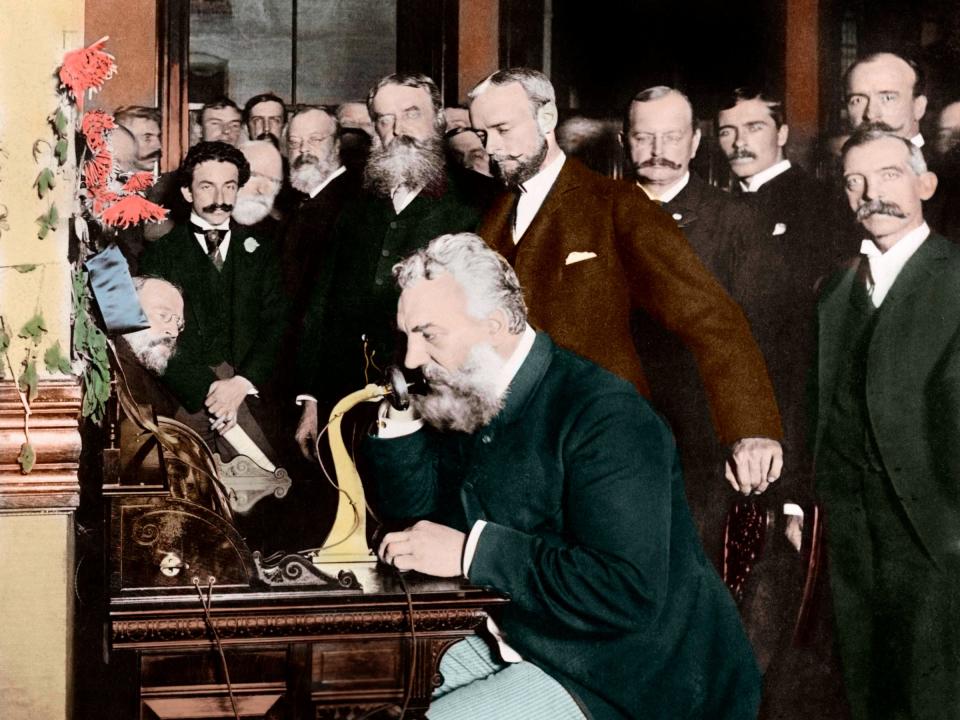The design evolution of the phone over the last 80 years is astounding

Wikipedia Commons
Alexander Graham Bell makes the first long distance telephone call, circa late 1870s.
In 1876, inventor Alexander Graham Bell patented the first phone: a bulky device with a curved mouthpiece and earpiece connected by wires. It looked much different than the iPhones of today.
In celebration of the phone’s 140th birthday this year, we’re taking a look back at the design evolution of the device.
The Cooper Hewitt museum recently digitized more than 200,000 items in its collections, including one that chronicles obsolete phones located in its storage facility. Check out some of these phones below, starting with a classic rotary from the late 1930s.
In the 1930s, famed industrial designer Henry Dreyfuss created what many consider to be the first modern telephone: the Model 302. Its design signaled a departure from earlier models: the ringer is in the phone (instead of a separate component), the cradle lies horizontally, and you speak and listen to the same piece resting on top.

Source: Slate
After the Model 302, AT&T realized it could sell the phone to the masses. The phone’s traditionally square base was replaced by a slimmer design with a touchpad, called the Trimline, first produced by the phone company in 1965. Buttons for “*” and “#” were added too.

As the 1960s went on, phones got even smaller. The Grillo Cricket, created by Italian designers Marco Zanuso and Richard Sapper, can fold up, setting it apart from other phones at the time. The clam-shell shape influenced the design of the modern flip phone.

Up until 1977, AT&T had a monopoly on phone design in the US. But that year, the Supreme Court lifted restrictions that once prevented people from buying and designing their own phones. This decision, along with AT&T’s divestment from the Bell Company, resulted in all kinds of creative phone designs, including the ’80s Beocom one below.

Starting in the early 1980s, some companies experimented with high design phones. The Enorme Telephone boasts a box shape, foreshadowing popular phones to come — with geometric pops of primary colors.

Throughout the ’80s, phones became unburdened from the cord. Pictured below is one such design for the cordless phone, called the Dancall 5000, by British designer John Stoddard.

Phones started shrinking even more in the early ’90s. You could charge the 1994 Talisman phone on the base that came with it.

Two years later, Motorola launched the the StarTAC, a small gray flip phone with a display screen and oval keys.

The iPhone, which debuted in 2007, transformed the phone by turning it into a tiny, mobile computer. Though other touchscreen phones had come before it, the iPhone’s sleek interface revolutionized mobile phone design.

The post The design evolution of the phone over the last 80 years is astounding appeared first on Business Insider.

 Yahoo Finance
Yahoo Finance 
